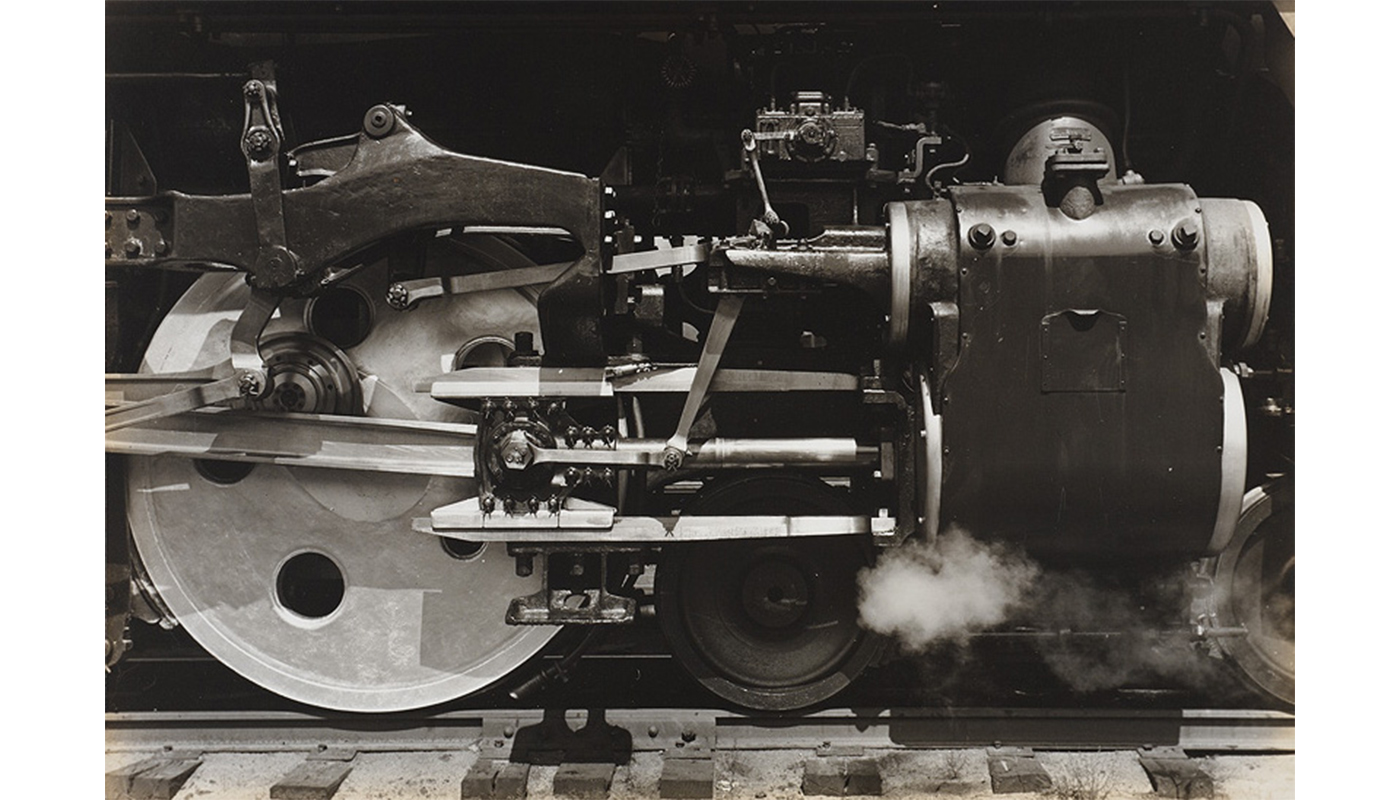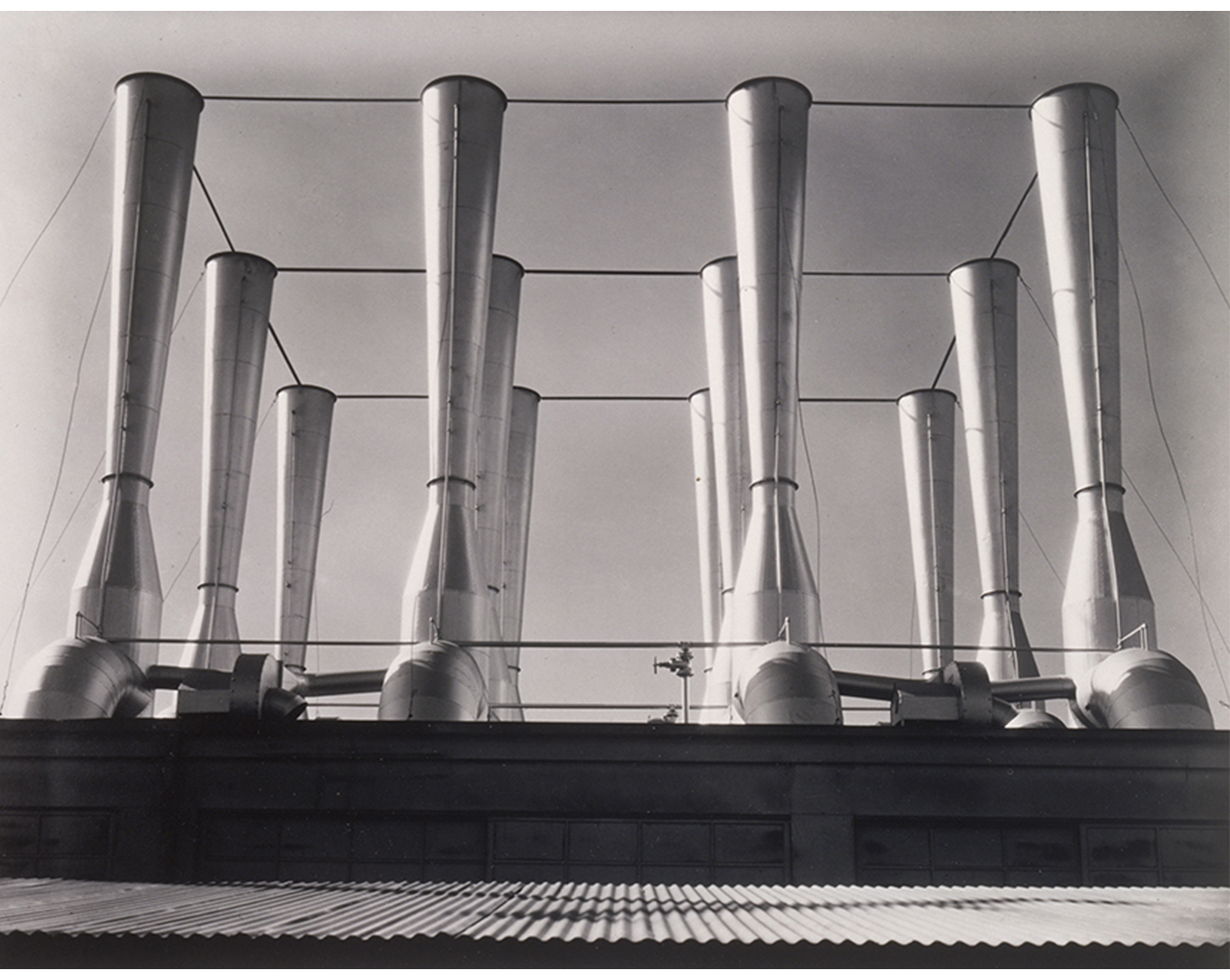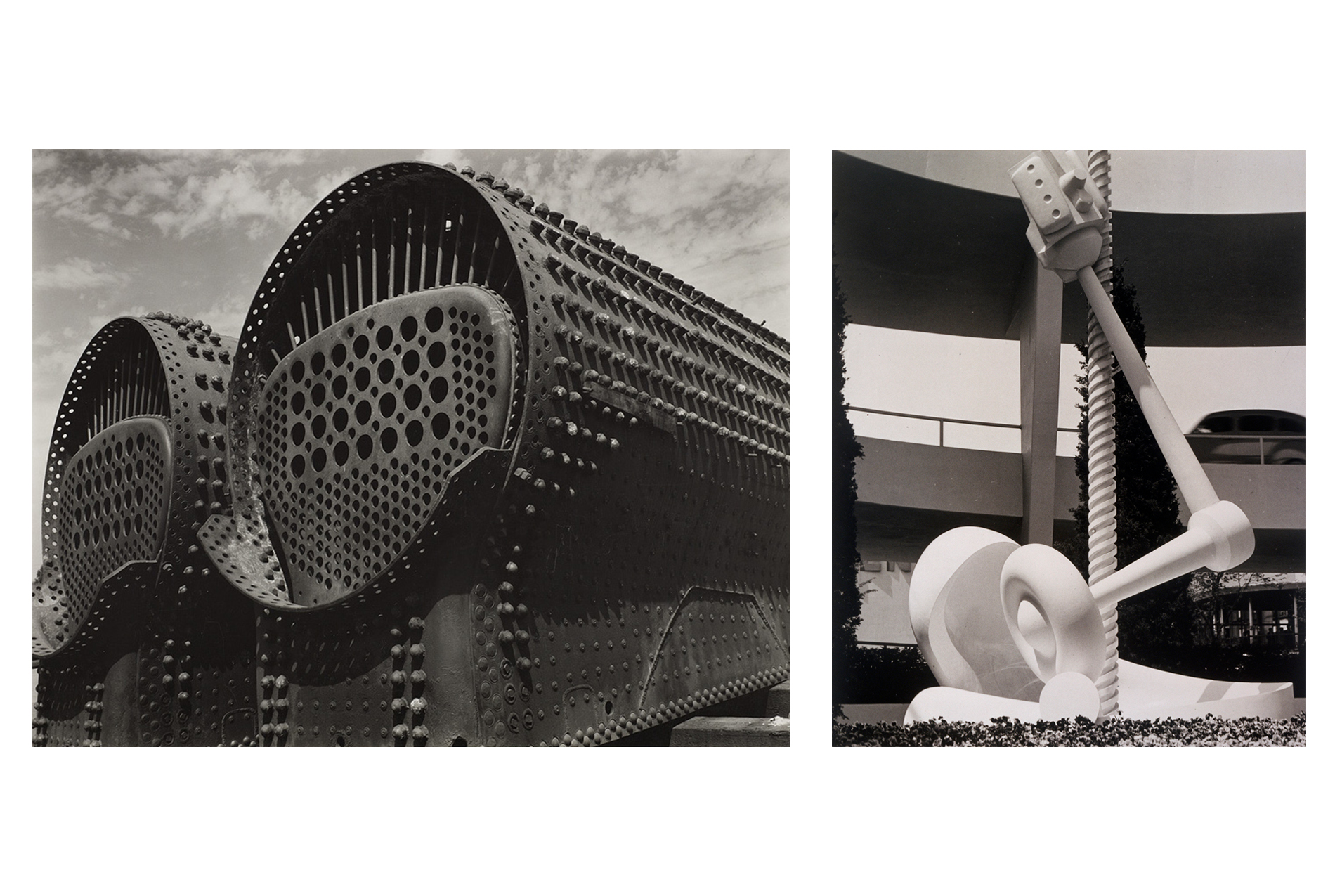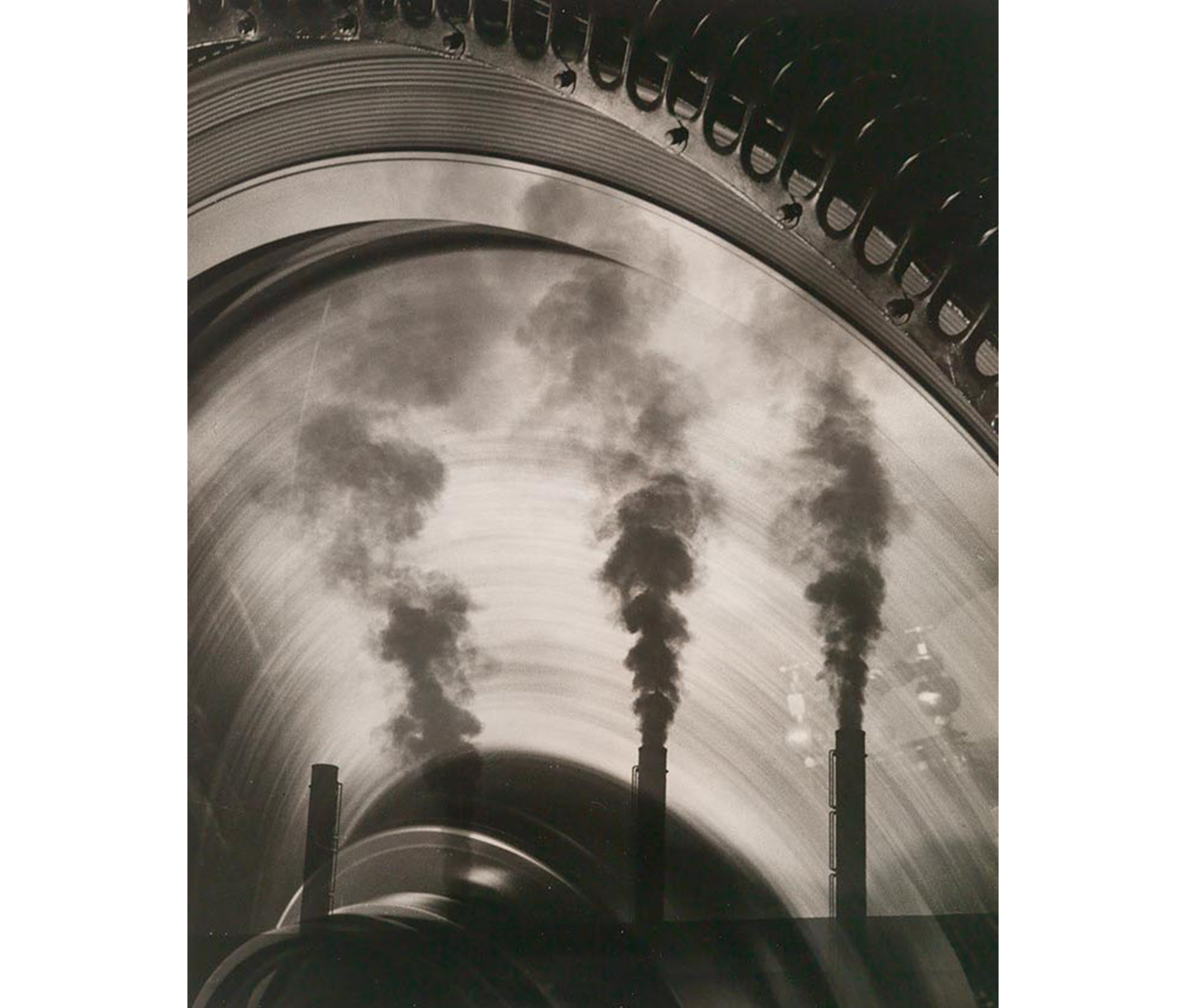
The Modern Machine
Colleen McDermott is the Brown Post-Baccalaureate Curatorial Fellow at SCMA.
The Smith College Museum of Art is dedicated to bringing out works on paper into the main galleries, where all visitors can see them. Since works on paper are more sensitive to light than other mediums, SCMA has installed special Works on Paper cabinets throughout the galleries for the display of prints, drawings and photographs. Today’s post is part of a series about the current installations of the Works on Paper cabinets, which will remain on view through summer 2017.
Charles Sheeler’s paintings and photographs of machinery were quintessential depictions of the American industrial age. Though they span a variety of time periods, the selected photographs in this cabinet—one of which is by Sheeler—capture a fascination with the aesthetics of power. Absent of their human architects and operators, these machines stand alone in their photographs. These artists found beauty in the functionality of these new machines, capturing fixed images of these inherently dynamic mechanisms.

Imogen Cunningham. American, 1883–1976. Fageol Ventilators, 1934. Gelatin silver print mounted on paperboard. Purchased. SC 1976.19.9.
Cunningham and Noskowiak both depict their respective industrial sites as objects of physical beauty, drawing attention to the straight, grid-like towers of Fageol Ventilators and the rolling curves of Machinery. Close-cropped and silhouetted against empty skies, the photographs are absent of any indication as to what purpose these machines actually serve.

Left: Sonya Noskowiak. American born Germany, 1900–1975. Machinery, n.d. Vintage gelatin silver print. Gift of Nicole Moretti Ungar, class of 1982, and Jon Ungar. SC 2006.56.37.
Right: Ruth Gray. American, 20th century. Study of Sculpture in Front of Ford Building at World's Fair, 1939. Gelatin silver print. Purchased. SC 1939.13.1.
The statue in the photograph on the right conveys the concept of machinery rather than the reality—abstracting its forms into bold curves and threaded towers. It is a massive, futuristic visualization of the power of technology, displayed at the World’s Fair, one of the most popular tourist attractions of its generation.

William M. Rittase. American, 1887–1968. Industrial Collage, 1930's. Vintage gelatin silver print. Purchased with the fund in honor of Charles Chetham. SC 2010.41.2.
Upon initial comparison, the Ritasse photograph seems like a simple image of a factory. However, he uses multiple exposures to superimpose images of a moving wheel and smokestacks upon one another. Ritasse takes the precision and attention to detail seen in this genre of photography and twists it to the surreal, giving this “collage” an uncanny feel.